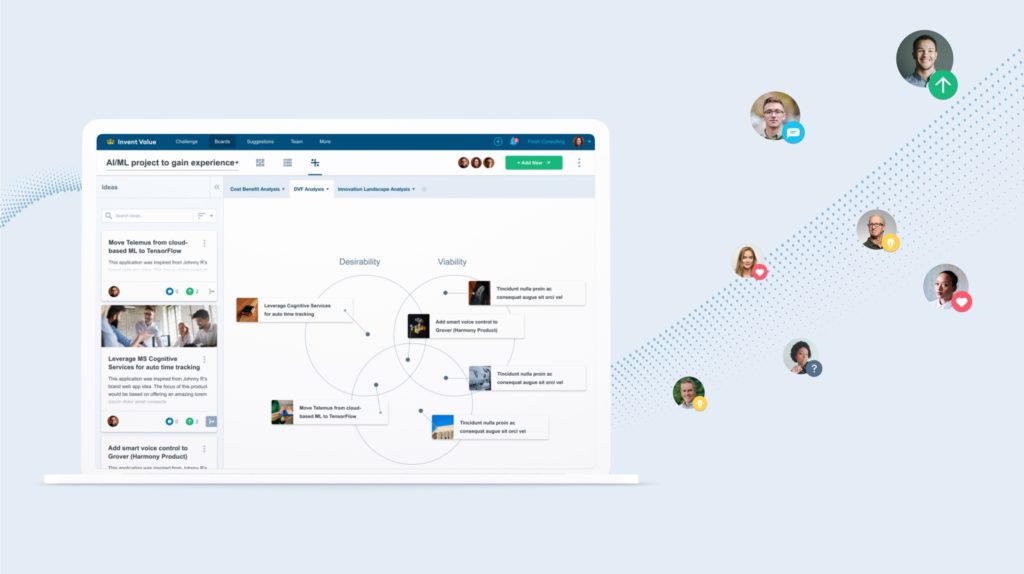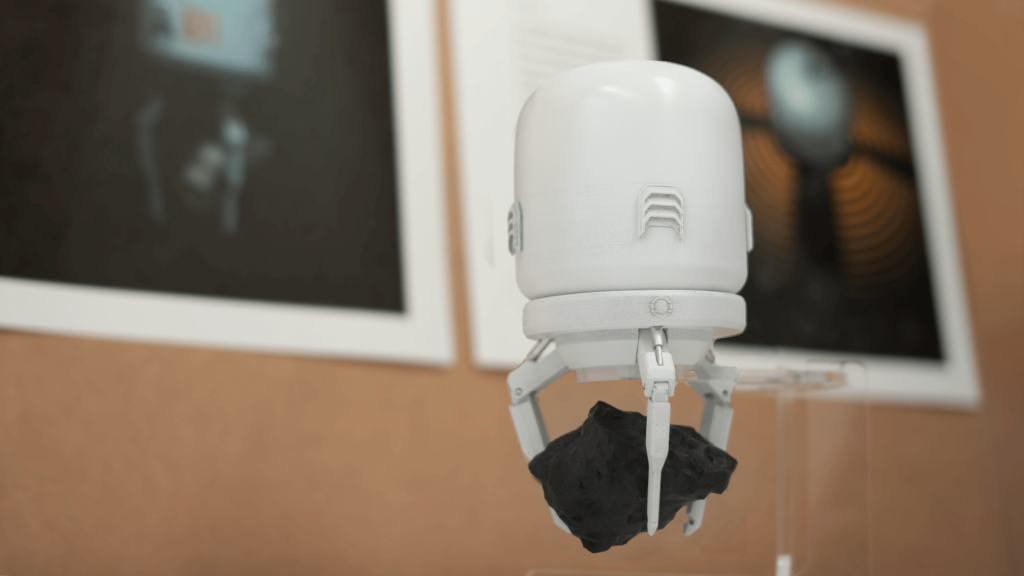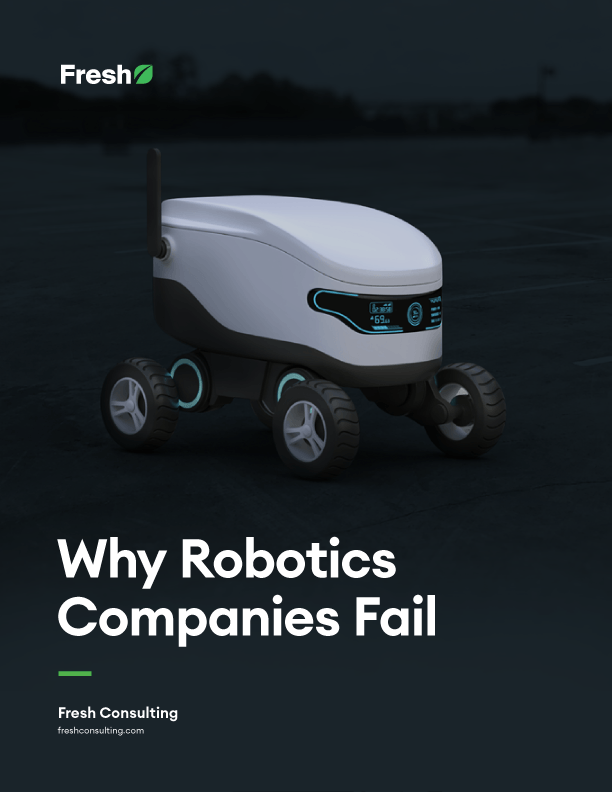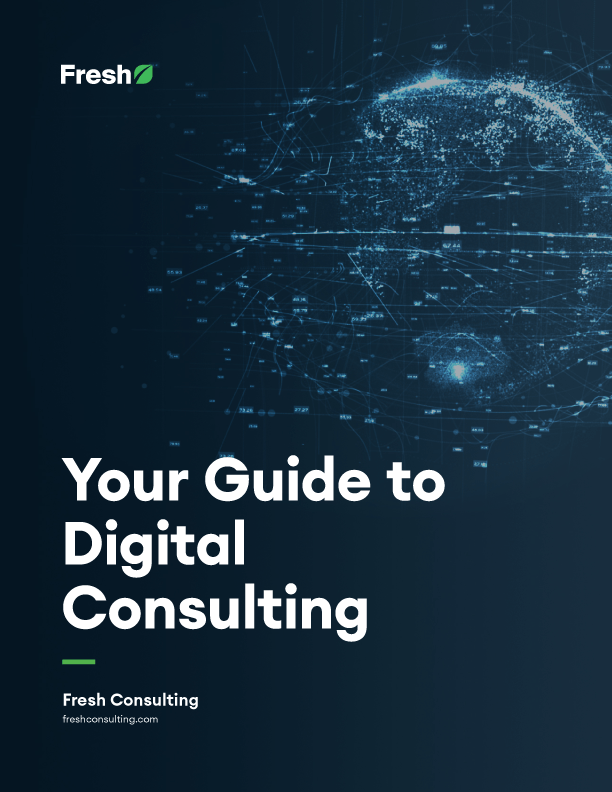Article
Think Like a Designer with Fresh’s Technology Innovation Cards
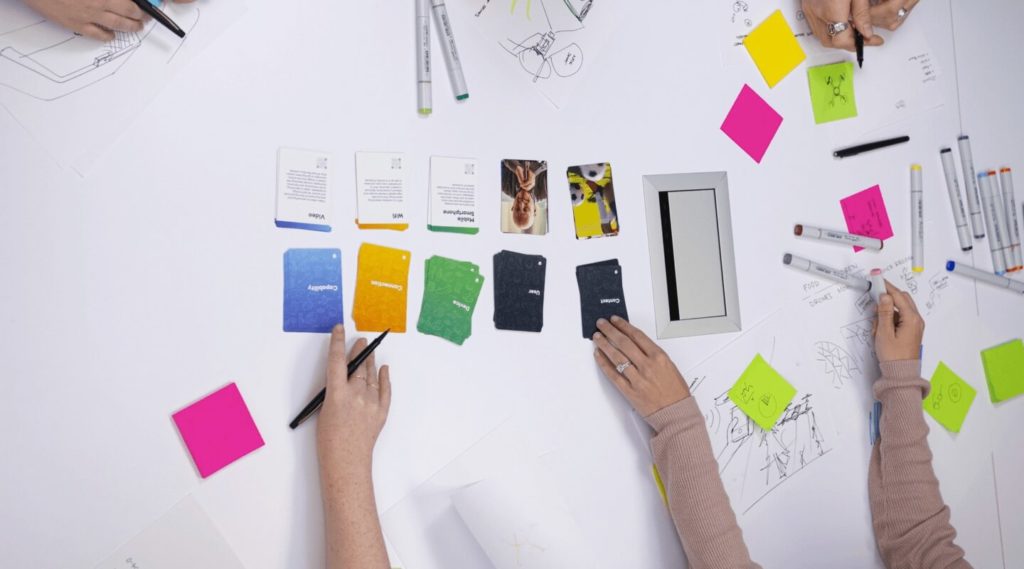
The most innovative solutions are often a combination of ideas rather than entirely new creations that stand alone.
When organizations draw on past experiences and the ideas they’ve generated on the way to their current state, they can develop robust technological solutions for the future. The Institute for the Future argued that “technological change is increasingly driven by the combination and recombination of foundational elements.”
Many of the most disruptive and long-lasting products in history were from a combination of emerging technologies and creative paradigms. The first consumer-facing computers were a combination of hardware, software, and an innovative reimagining of manual processes. The car was based on inventors viewing historical modes of transportation, borrowing the best ideas, and creating a new solution to meet modern needs. Product iterations almost always improve on the existing platform by introducing new features rather than reinventing the wheel.
Consider what the Internet, Bluetooth, and the Cloud have done for innovative digital products. Internet integration within any device makes it connected and “smart.” Bluetooth allows devices to connect, a solution that has resolved hundreds of use cases requiring communicative technology. The Cloud takes elements of both of the previous innovations and makes them seamless, storing data in a shared, always-online repository accessible from anywhere.
While the technologies are powerful on their own, they reach new heights when joined together.
Innovation as a Game
Fresh created technology innovation cards to empower anyone to think like a designer and innovator. Card categories include:
Connections: Systems that link together devices and concepts.
Devices: Platforms for technology, including physical tools like smart robots and wearables.
Users & Contexts: Cards that provide the basis for a design challenge.
Capabilities: Methods and abilities enabled by technology.
Players have to use the design thinking process to construct solutions to various real-world challenges. The cards give you a starting point, and users must creatively decide how they can relate with one another.
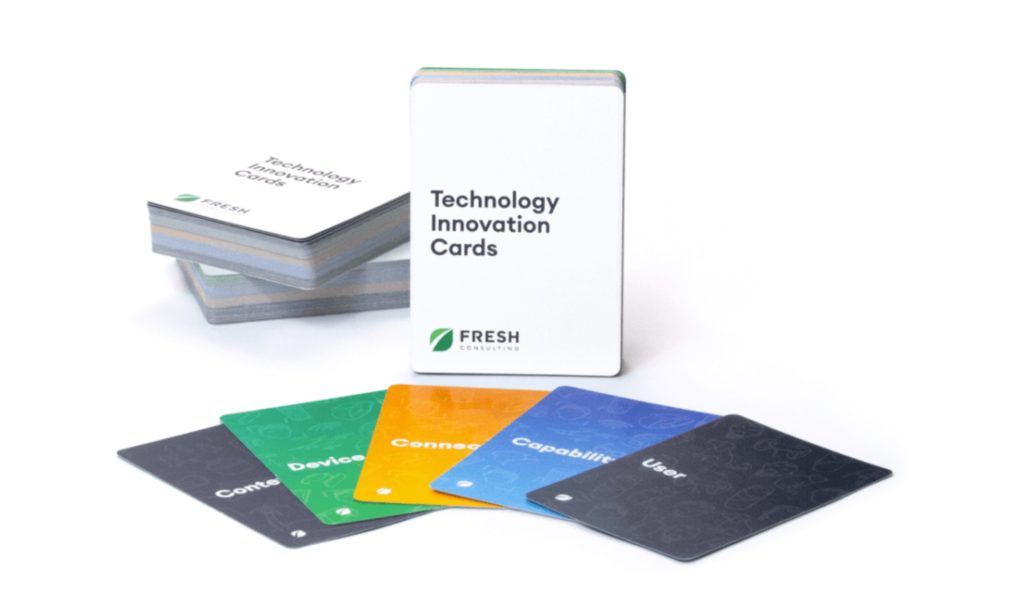
Types of Technologies
Device:
- Automated Devices: Devices that operate with electronic components for wireless communication.
- Computer: Technology that completes logical operations either manually or automatically.
- Digital Camera: Image sensor used to gather data and save it as an image with digital memory.
- Drone: A flying robot that can operate manually or autonomously.
- Mobile Smart Phone: Mobile phones that have computing capabilities.
- Nanotechnology: Technology that manipulates the design of material at the molecular level.
- Smart Robots: Pre-programmed robots that can complete various tasks and collaborate with humans.
- Tablet: A mobile device with a touch screen, rechargeable battery, and mobile operating systems.
- Wearables: Technology worn on the body as an implant or an accessory.
Capability:
- 3D Printing: This takes a digital model from a computer and creates a physical model.
- Augmented Reality: Interactive and immersive experiences where the digital world is overlayed on top of the physical world.
- Biometrics: The use of unique biological identifiers that give people another way of interacting with computers.
- Chatbots: A piece of software that is programmed to engage in human conversation.
- Deep Learning: Artificial Neural Networks that allow computers to learn through experience and repetition.
- Digital Twins: An exact digital copy of something.
- Facial Recognition: Can identify a person by their facial features.
- Natural Language Generation: How computers translate data into text or speech.
- Video: The display of moving visual media.
- Virtual Reality: A simulated experience, placing the user in an interactive and simulated virtual environment.
Connection:
- API: It simplifies the process of building software. These are used for operating systems, databases, websites, and software libraries.
- Blockchain: A means for storing and transferring digital information.
- Cloud Computing: Stores information in data centers, making it accessible anywhere that someone can access the internet.
- Edge Computing: Computing done right at the source of the data.
- GPS: This measures a user’s position using satellite technology.
- IoT: Devices that are connected and transfer information over a shared network.
- Mobile Apps: A computer program that is designed to run on a mobile device.
- Smart Device Connection: Used to share information through a wireless connection.
- Software as a Service: Subscription service for accessing specific software.
Today’s existing technologies compose a landscape for innovation. Starting with a user and a problem, anyone can construct new product ideas from these fundamental technology components.
Contact us today if you would like to purchase your deck of cards!




